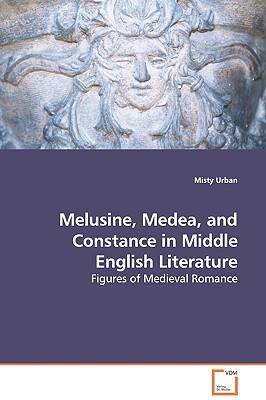
- We will send in 10–14 business days.
- Author: Misty Urban
- Publisher: VDM Verlag
- Year: 2009
- Pages: 192
- ISBN-10: 3639114078
- ISBN-13: 9783639114072
- Format: 15.2 x 22.9 x 1 cm, minkšti viršeliai
- Language: English
- SAVE -10% with code: EXTRA
Melusine, Medea, and Constance in Middle English Literature - Figures of Medieval Romance (e-book) (used book) | bookbook.eu
Reviews
Description
If woman was already considered a baser being in medieval English literary culture, then what explains the monstrous women--part-animal, or magically-empowered--who function as typical romance heroines? If the monstrous women simply dramatize the conventions of medieval misogyny, then why do so many of them found dynasties, establish empires, and fill the royal seats across Europe with their offspring? A closer look at the figures of Constance, Medea, and Melusine in 14th, 15th, and early 16th-century English narratives reveals how metaphorical female monstrosity functions as a critical lens that allows authors, and audiences, to reflect on and re-examine misogynistic conventions, patriarchal authority, and the romance formula itself. Arguing that the Middle English romance constructs new possibilities for fiction, this study uses recent scholarship on monster theory and medieval women to theorize the presence of these monstrous women in medieval romance, discovering how they trace the formulation of a distinct gender ideology and expose the flaws of a literary rhetoric that, in defining the female as Other to the normative male, makes women into monsters.
EXTRA 10 % discount with code: EXTRA
The promotion ends in 21d.22:12:37
The discount code is valid when purchasing from 10 €. Discounts do not stack.
- Author: Misty Urban
- Publisher: VDM Verlag
- Year: 2009
- Pages: 192
- ISBN-10: 3639114078
- ISBN-13: 9783639114072
- Format: 15.2 x 22.9 x 1 cm, minkšti viršeliai
- Language: English English
If woman was already considered a baser being in medieval English literary culture, then what explains the monstrous women--part-animal, or magically-empowered--who function as typical romance heroines? If the monstrous women simply dramatize the conventions of medieval misogyny, then why do so many of them found dynasties, establish empires, and fill the royal seats across Europe with their offspring? A closer look at the figures of Constance, Medea, and Melusine in 14th, 15th, and early 16th-century English narratives reveals how metaphorical female monstrosity functions as a critical lens that allows authors, and audiences, to reflect on and re-examine misogynistic conventions, patriarchal authority, and the romance formula itself. Arguing that the Middle English romance constructs new possibilities for fiction, this study uses recent scholarship on monster theory and medieval women to theorize the presence of these monstrous women in medieval romance, discovering how they trace the formulation of a distinct gender ideology and expose the flaws of a literary rhetoric that, in defining the female as Other to the normative male, makes women into monsters.


Reviews